

Table of contents
- ants in general
- leafcutter ants
- Fire ants (Solenopsis spp)
- Common lawn ants (Tetramorium caespitum)
- Pharaoh ants (Monomorium pharaonis)
- Carpenter Ants (Camponotus)
- Red ants (Myrmica rubra)
- Black-grey road ants (Lasius niger)
- Black-headed ants (Tapinoma melanocephalum)
- Wood Ants (Formica)
- Fragrant house ants (Tapinoma sessile)
Ants, although not welcome in the gardens and on the terrace, are fascinating insects that form their own colony with ant queens, males and workers. In fact, many species of ants are very useful as they provide balance in the ecosystem. Around 13,000 species of ants are known worldwide. The following article presents the best-known species native to Germany.
ants in general
In every climatic zone there are countless species of ants that have spread here. All ant species belong to the arthropods and thus to the insect family. An ant colony can always be divided into three castes, which include the queen ant, workers, and males. Ants have the following additional properties:
- Worker bees are usually wingless
- sexually mature females (later queens) have wings
- the males also have wings
- after mating, the males die
- Females lose their wings
- Antennae and mandibles on the mouth
- particularly good sense of smell
Tip:
Flying ants are not a specific species, all ant species can fly at certain times when they mate. Then the later queens swarm out at the same time to find a place for their new nest and their colony.
leafcutter ants
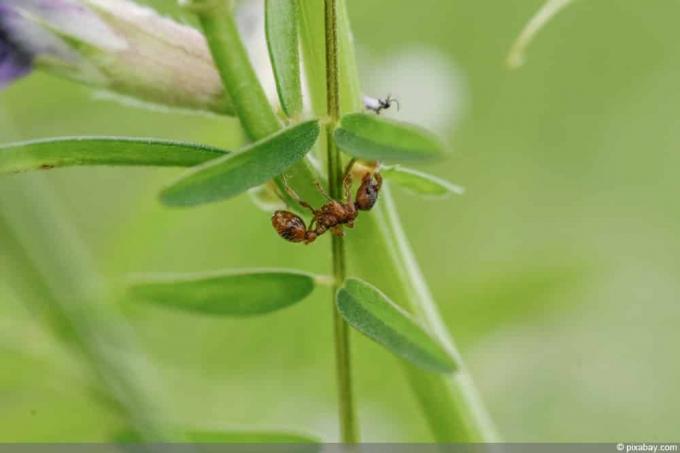
Leafcutter ants are always a very large colony of ants once they have found a place. Because the ant queen of this species gives birth to up to 150 million workers in the course of her life. About two to three million of these are always alive at the same time. The diet of leafcutter ants is as follows:
- cut the leaves of surrounding plants with their mouthparts
- these are chewed into a substrate
- this creates a large sponge
- is criss-crossed with many tunnel tubes
- a mushroom grows on it
- the actual food of the leaf-cutter ants
Tip:
Unlike many other ant species that feed on insects or human food, the leafcutter ants are the vegetarians among the ants. It is therefore particularly important when a nest of this ant species is found in the garden to protect the surrounding plants from leaf damage.
Fire ants (Solenopsis spp)
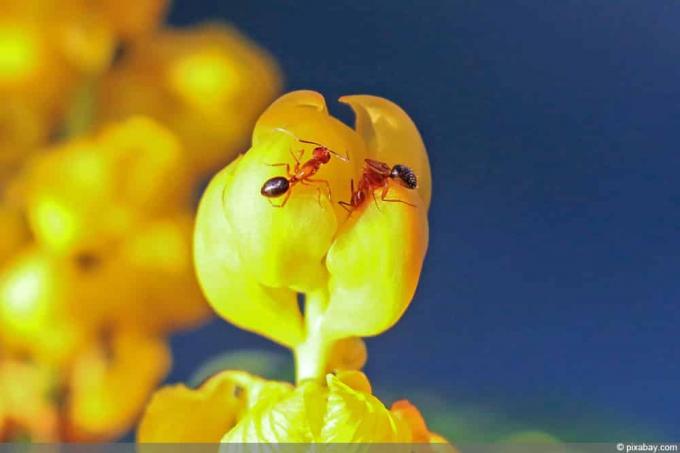
The fire ants are not actually a native species of ants, they have been but imported into the local latitudes and multiply here more and more. The fire ants possess the following characteristics:
- usually live in the open field or under stones
- usually in the immediate vicinity of other ant colonies
- steal the brood and food supplies from this
- often bivouac nests in the open field
When the fire ants have set up a bivouac nest, it can be very fascinating. Because here the workers cling together with the larvae. The ant brood is protected inside. In this way, the animals do not need any material to build a nest.
Tip:
If you encounter fire ants, you should give the nest a wide berth. Because the aggressive animals spray a poison that contains alkaloids that can trigger allergic reactions up to anaphylactic shock. The bite causes a burning pain and small pus pimples.
Common lawn ants (Tetramorium caespitum)
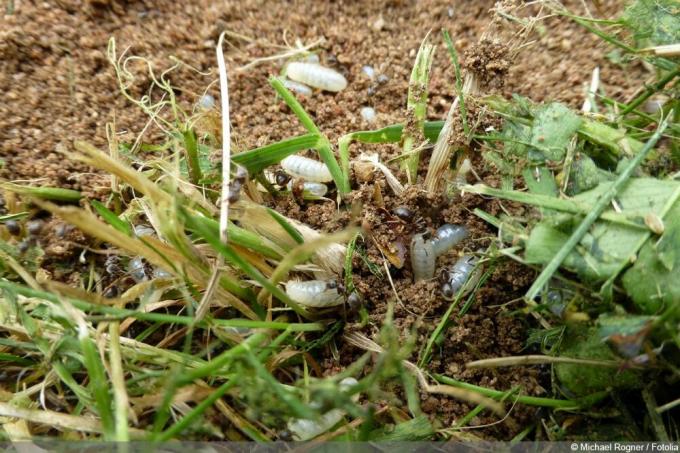
The common lawn ant is very small, up to 6 millimeters long, and is mainly active in spring and summer. The nests are in the ground or under stones. The species is an omnivore and likes to enter buildings via power lines and electrical cables in search of food. The common lawn ant has the following characteristics:
- feeds on all human foods
- this also includes pet food of all kinds
- enters mainly at night in search of food
- up to 80,000 workers live in the nest
- Nests like to be built near food sources
Tip:
If ants are found in the apartment, in the basement or in a storage room, then the nest cannot be far away. However, since this is outside the building, the ant trail in the building often cannot help. Therefore, look for the nest under stones or in the ground near the wall outside.
Pharaoh ants (Monomorium pharaonis)
The smallest, but also one of the most dangerous species of ants in the local latitudes are the pharaoh ants. The animals of this species are only about 4.5 millimeters long, but since they are active all year round, they like to nest in the brickwork during the cold months. Buildings with constant temperatures are preferred. Therefore, the following must be observed with the pharaoh ants:
- Because of their size, they get along well in cracks and crevices
- especially dangerous in medical facilities
- are considered to be carriers of highly infectious diseases
- one of the most harmful species in Germany
- is therefore also fought
Pharaoh ants not only like to sit in the cracks of buildings, they also feed on human food. They particularly prefer substances with a high protein and sugar content, but do not stop at all other foods.
Tip:
Even if most ant species are under species protection and may not be killed, they should acted immediately in the event of an infestation of pharaoh ants in their own house and called in an expert become.
Carpenter Ants (Camponotus)
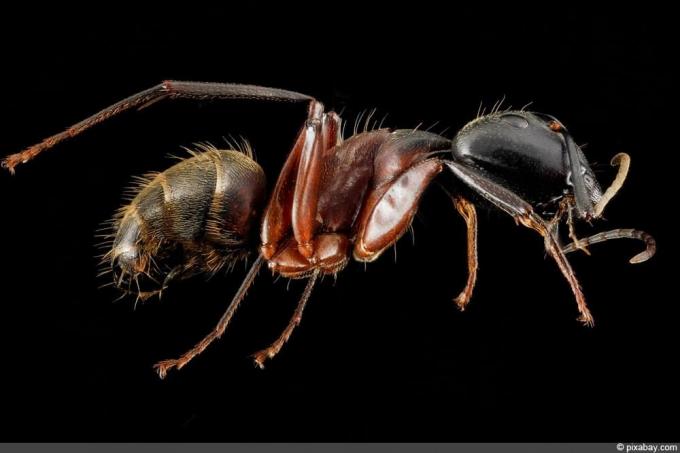
One of the largest species is the carpenter ant, whose workers can grow up to 18 millimeters long. What is unusual about this species is that the males help with the care of the brood. In the other species, the males are only responsible for reproduction and therefore only have a limited life expectancy. Carpenter ants are characterized by the following nest construction:
- live mostly in rotten wood
- build nest chamber systems in here
- enter the trunk via the roots
- Nest not visible from the outside
- can consist of several trees
- Corridors are connected underground
Red ants (Myrmica rubra)

The red ant is also known under the further name red-yellow knot ant. The queens of this species have a special feature in the form of a shiny triangle on the forehead. The ant species has the following characteristics:
- a nest is shared by up to 15 queens
- this includes another 1000 workers
- often several nests are combined
- then it becomes a super colony
Black-grey road ants (Lasius niger)
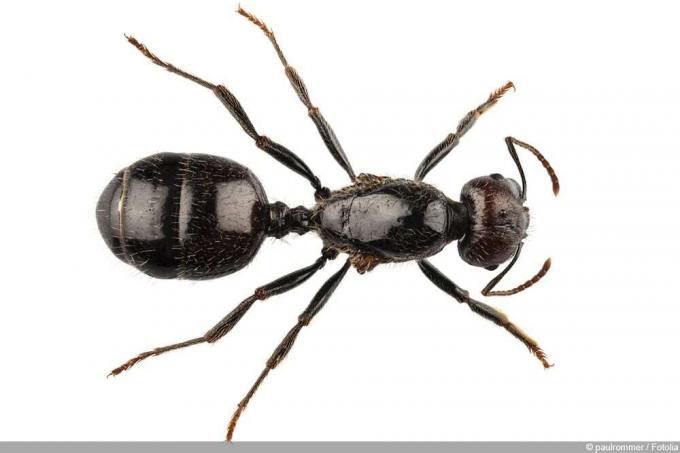
The black-grey garden ant, which is easily recognized mainly because of its very dark colour, is not a pest. Because they prefer to build their nests in the ground or under stones. Its food, on the other hand, is mainly very high in protein, so it eats the insects that can be found around the nest. Soil nests can be recognized by the fine soil around the holes.
Black-headed ants (Tapinoma melanocephalum)
Black-headed ants are easily recognized by their black head and otherwise very pale abdomen. This type of ant also likes to invade human habitation, as it prefers sweet foods and fats as food. If it lives outdoors, it feeds on caterpillars, which have sweet excretions, and on honeydew. The black-headed ants prefer the following nest construction:
- gladly on terraces, balconies and in the garden
- here under flower pots, loose stone slabs
- also on trees under loose bark
Since the black-head ants prefer sweet foods, they can also be easily diverted and thus resettled. Otherwise, they quickly get from their nest under the flower pot or the patio tiles to the richly laid coffee table outdoors. The black-headed ants are active all year round because the queen is constantly in the reproductive phase and the brood has to be fed even in winter.
Tip:
Because blackhead ants are attracted to moisture, they are often found in the bathroom or under a kitchen counter.
Wood Ants (Formica)

The best-known species of ants in the local latitudes are the wood ants, which primarily maintain the ecosystem in the forest. They are on the endangered animals list as more and more habitat is being taken away from them. The wood ants are characterized by the following characteristics:
- eat forest pests
- are also a source of food for other forest dwellers
- can bite if attacked
- defend themselves with formic acid
- Size about an inch in length
- Queen ants up to 25 years old
- ceases egg production in the fall
- Ants hibernate without brood
The wood ants build their nest as mounds with scatter domes. The nests, which usually consist of plant parts, soil, resin and wood residues, are found mainly on rotten tree stumps. The nests can reach a circumference of up to five meters.
Tip:
Anyone who discovers wood ants in the forest or a clearing should avoid stopping here. Because the bites and the formic acid sprayed with them can be very painful.
Fragrant house ants (Tapinoma sessile)

Fragrant house ants also like to stay near people's homes. Because here you will find everything you need for your diet. Since the species is also very small with a length of up to 3 millimeters, it can easily get into the house through cracks and other entry points. Once established, it lives here longer for the following reasons:
- Ants live for several years
- new ants developed every forty days
- in colony up to 10,000 animals
- prefers fruit and sweet foods
- but also all other foods
Indoors, the sweet-smelling house ants can usually be found in green plants but also under toilet lids, because they love it damp.
Tip:
If a sweet-smelling house ant is crushed, it gives off a scent of coconut, so this species can be easily identified.
 garden editorial
garden editorial I write about everything that interests me in my garden.
Learn more about beneficial insects

What does hedgehog droppings look like? | Recognize hedgehog droppings
Hedgehogs are not only very cute, but also useful animals. a. devour the unpopular slugs in the garden. They feel particularly comfortable in natural gardens. Their legacies, which can even be hazardous to health, are less pleasant.

What does raccoon droppings look like? How to recognize him
Raccoons are purely outwardly, quite cute contemporaries. However, this does not hide the fact that these are wild animals that can cause great damage in the garden and on the house. This masked intruder can pose a danger to residents and pets.
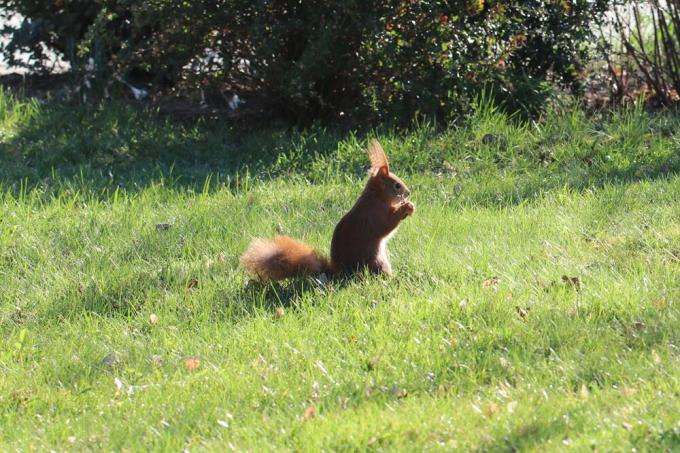
Recognizing squirrel droppings: typical appearance with picture
Gardens provide an oasis for many wild animals to forage there. The animal visitors leave clearly visible traces in the form of droppings. If you take a closer look at the pieces of excrement, you can see which animal was the cause based on certain clues.

Recognizing fox droppings: 5 characteristics with a picture of the fox droppings
If animal droppings are found in the garden, it is annoying in any case. However, there can also be a danger with fox droppings in particular. But how can fox droppings be recognized and what should be considered when removing it?

drive away wild bees | What to do against wild bees in the garden?
If you want to drive away and get rid of wild bees, you should use natural and gentle means. Because the insects are useful in the garden and generally important for the environment. In addition, they are rarely threatening. We reveal how the fight works.
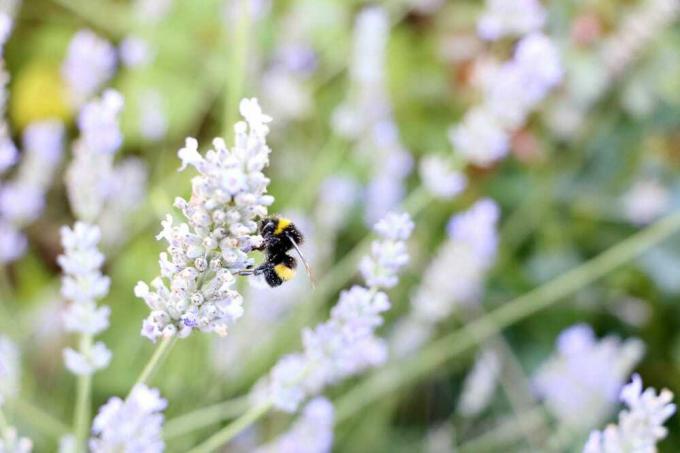
Build a bumblebee castle: Instructions | The ideal location to set up
Like bees, bumblebees make an important contribution to the pollination of plants. Your big advantage: you start flying in the spring long before the bees. How to build an ideal nesting place (bumblebee castle) for the endangered animals can be found here.



